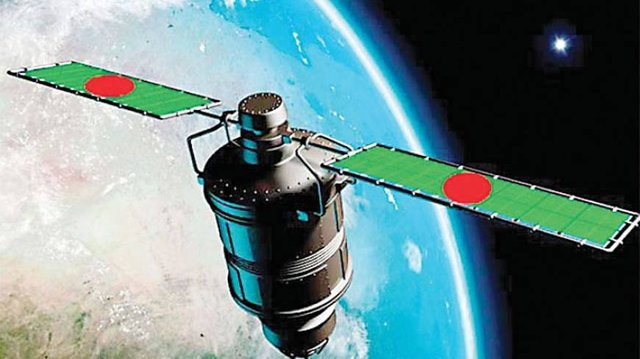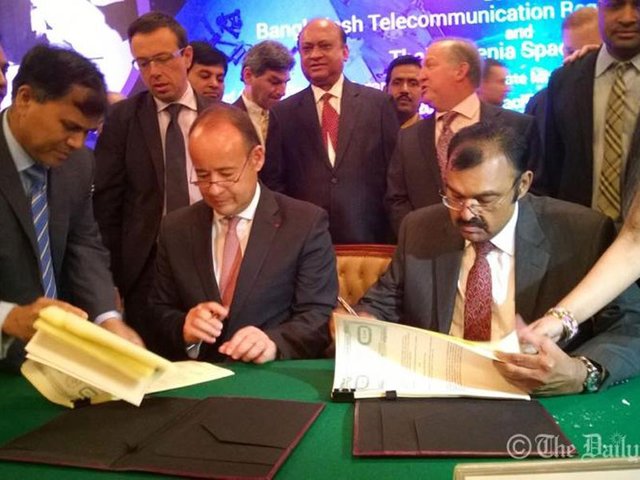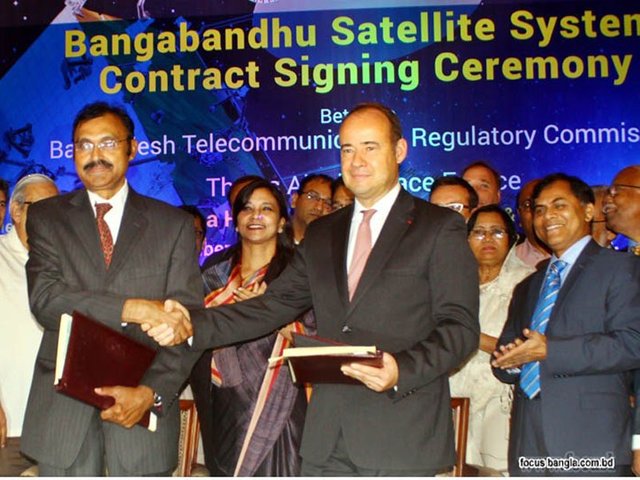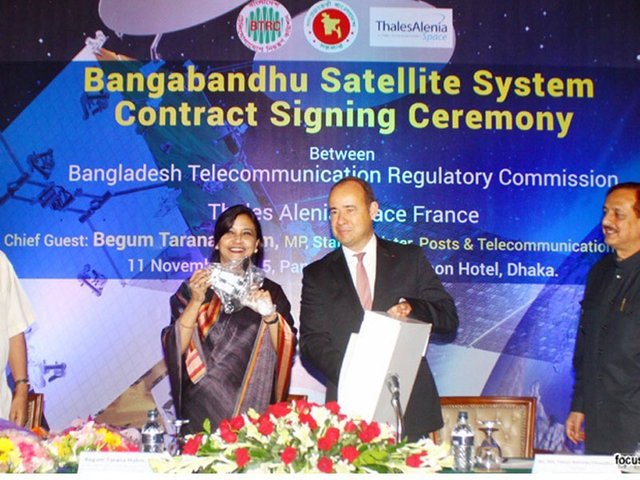RE: Quality talk about @BabsBoard GarageSale Issue 10

The Bangabandhu 1 (BD-1) satellite, is the first geostationary communications satellite of Bangladesh, The satellite will be located at 119.1°E longitude orbital position and provide broadcasting and telecommunication services to rural areas in Bangladesh. It will also introduce profitable services, including direct-to-home (DTH) services.
It will offer Ku-band and C-band services across Bangladesh and its territorial waters of the Bay of Bengal, India, Nepal, Bhutan, Sri Lanka, Philippines and Indonesia.
Once operational, the satellite will enable the nation to save approximately BDT1.08bn ($14m) currently being spent on satellite rents each year. BTRC also plans to launch follow-on series of BD-2 and BD-3 satellites in phases.



Bangabandhu-1 satellite design and development
Thales Alenia Space was selected as prime contractor to provide turnkey systems, including design, production, testing services for the BD-1 satellites, in November 2015. The scope of the contract also includes the development of ground segment.
BD-1 satellite’s communications module integration work is being carried out at Thales Alenia Space plant located at Toulouse in France. The critical design review (CDR) of BD-1 satellite was completed in January 2017. The service module for the satellite is being manufactured at Cannes and satellite mating is expected to be completed by March 2017.
Thales Alenia Space Belgium, Thales Alenia Space Italia and Thales Alenia Space España are also involved in the development of the satellite and the ground components.
Based on Spacebus 4000B2 platform developed by Thales Alenia Space, the BD-1 satellite will have a launch mass of 3,500kg. It will include two deployable solar arrays with batteries. The spacecraft will have a designed lifespan of 15 years.
Communication capabilities of BD-1 satellite
The BD-1 satellite will be fitted with 26 Ku-Band and 14 C-Band transponders. The major applications of the spacecraft include DTH, very small aperture terminal (VSAT) communications, backhaul and trunking, network restoration, and disaster preparedness and relief.
The primary service area (PSA) of the satellite will be Bangladesh and neighbouring countries, while its secondary service areas (SSA) will include South East Asia, Europe, Middle East and North Africa (MENA), as well as East Africa.
Financing for BD-1 satellite
The development of BD-1 satellite is estimated to cost $248m. The Bangladeshi Executive Committee of the National Economic Council (ECNEC) approved $37.58m in funding for the development of the country’s first satellite in September 2014.
Hong Kong and Shanghai Banking Corporation (HSBC) agreed to provide $17.46m for the construction of the BD-1 and its ground equipment.
Launch Date
December 2017
Launch Vehicle
Falcon 9
Launch Site
Cape Canaveral, Florida, US
Launch Mass
3,500kg
Expand
The Bangabandhu 1 (BD-1) satellite, the first geostationary communications satellite of Bangladesh, is currently under development by the Bangladesh Telecommunication Regulatory Commission (BTRC). The satellite is expected to be launched into geostationary earth orbit (GEO) in December 2017.
The satellite will be located at 119.1°E longitude orbital position and provide broadcasting and telecommunication services to rural areas in Bangladesh. It will also introduce profitable services, including direct-to-home (DTH) services.
It will offer Ku-band and C-band services across Bangladesh and its territorial waters of the Bay of Bengal, India, Nepal, Bhutan, Sri Lanka, Philippines and Indonesia.
Once operational, the satellite will enable the nation to save approximately BDT1.08bn ($14m) currently being spent on satellite rents each year. BTRC also plans to launch follow-on series of BD-2 and BD-3 satellites in phases.
Bangabandhu-1 satellite design and development
Thales Alenia Space was selected as prime contractor to provide turnkey systems, including design, production, testing services for the BD-1 satellites, in November 2015. The scope of the contract also includes the development of ground segment.
BD-1 satellite’s communications module integration work is being carried out at Thales Alenia Space plant located at Toulouse in France. The critical design review (CDR) of BD-1 satellite was completed in January 2017. The service module for the satellite is being manufactured at Cannes and satellite mating is expected to be completed by March 2017.
Thales Alenia Space Belgium, Thales Alenia Space Italia and Thales Alenia Space España are also involved in the development of the satellite and the ground components.
Based on Spacebus 4000B2 platform developed by Thales Alenia Space, the BD-1 satellite will have a launch mass of 3,500kg. It will include two deployable solar arrays with batteries. The spacecraft will have a designed lifespan of 15 years.
Communication capabilities of BD-1 satellite
The BD-1 satellite will be fitted with 26 Ku-Band and 14 C-Band transponders. The major applications of the spacecraft include DTH, very small aperture terminal (VSAT) communications, backhaul and trunking, network restoration, and disaster preparedness and relief.
The primary service area (PSA) of the satellite will be Bangladesh and neighbouring countries, while its secondary service areas (SSA) will include South East Asia, Europe, Middle East and North Africa (MENA), as well as East Africa.
BD-1 satellite launch vehicle details
The satellite will be launched aboard Falcon 9 version 1.2 rocket. The launch operations will be conducted from the SpaceX launch site at Cape Canaveral, Florida, US.
"The satellite is expected to be launched into geostationary earth orbit (GEO) in December 2017."
Financing for BD-1 satellite
The development of BD-1 satellite is estimated to cost $248m. The Bangladeshi Executive Committee of the National Economic Council (ECNEC) approved $37.58m in funding for the development of the country’s first satellite in September 2014.
Hong Kong and Shanghai Banking Corporation (HSBC) agreed to provide $17.46m for the construction of the BD-1 and its ground equipment.
Ground control station
The satellite will be controlled by two ground stations, which will be used for primary and back-up site operations and control centres. The survey for site selection for the construction of the ground control stations has been completed.
Thales Alenia Space will provide tools for the ground segment for the mission planning and space operations monitoring. It will also build two ground facility buildings, which will house satellite control and network operations centre.
Spectra Engineers was contracted to execute civil works of the ground facilities.
I call your name @Ramta Reddington to judge my comment
I have the honor to be the winner, the only thing I will do is not to repeat the mistake I made and to respond to the congratulations of the people with one comment to thank them all and not write a lot of comments "Thank you".
I thank Sir @Babsboard who told me this to be careful next time, and not to get me down because he realized that I did it by mistake.